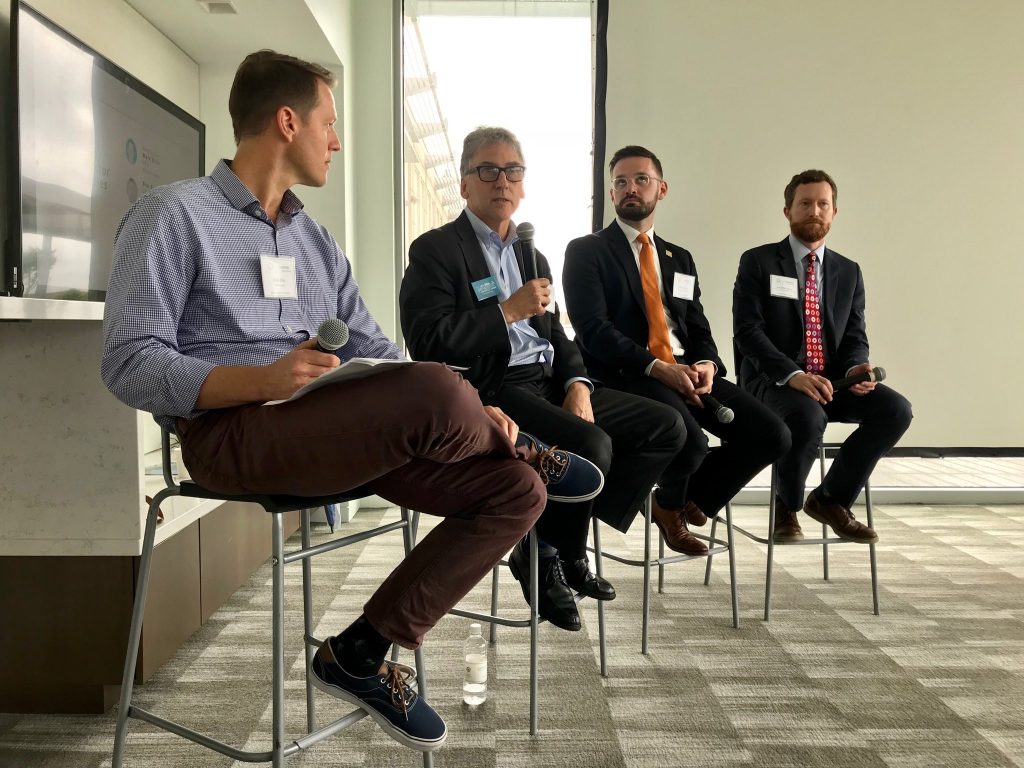Private-public partnerships are a buzz-phrase in the world of sustainability. How can governments work with private entities to ensure a healthy, sustainable, resilient future for all?
This discussion at GRESB’s Sustainable Real Assets Conference (SRAC) in Washington, DC, was a pivotal moment in the day’s events to bring together the investor-led discussions of the morning with the building owner and operator heavy discussion of the afternoon.
Measurabl CEO Matt Ellis moderated the panel featuring Dan Carol, the Senior Advisor for Infrastructure and Energy for the Office of California Governor Jerry Brown, Kevin J. Bush, the Chief Resilience Officer of Washington, D.C., and Seth Miller Gabriel, the Director of Office of Public Private-Partnerships (OP3) at the DC Government.
Here are the three major themes established during the panel:
1. Procurement
Governments, particularly at the municipal level where there is more control over processes, are actively including resilience factors in their procurement rules. These mandates have advanced resilience in city planning and projects, as well as establishing resilience as a key component of sustainability. Government entities should continue to mandate resilience considerations in procurement rules to create sustainable urban centers.
2. Transparency
The creation of policy to expand transparency into the risks of assets has been a growing trend in the public sector. Think about the number of new regulations that require benchmarking and disclosure of building performance, particularly around energy and water consumption; this is a top-down approach where municipalities mandate the private sector’s transparency. With these insights, the markets reward organizations that operate with sustainability and resilience in mind.
California’s New Benchmarking & Disclosure Ordinance
3. Measurement
As the adage goes, you can’t manage what you don’t measure, and you can’t act upon the pieces of your organization that you’re not measuring. Benchmarking ordinances are one way that the public sector is ensuring companies with large buildings – and large carbon footprints – are measuring their building performance on an annual basis. Cities are getting more creative in other ways that they can work with private entities to incentivize them to measure their resiliency.
As other governments are catching up to resilience leaders like the DC Government and the Office of California Governor Jerry Brown, expect their innovative measures to be adopted by other governments.
